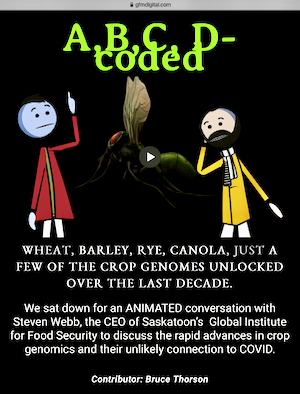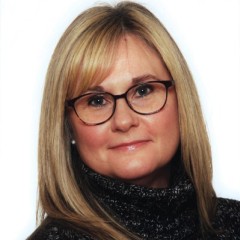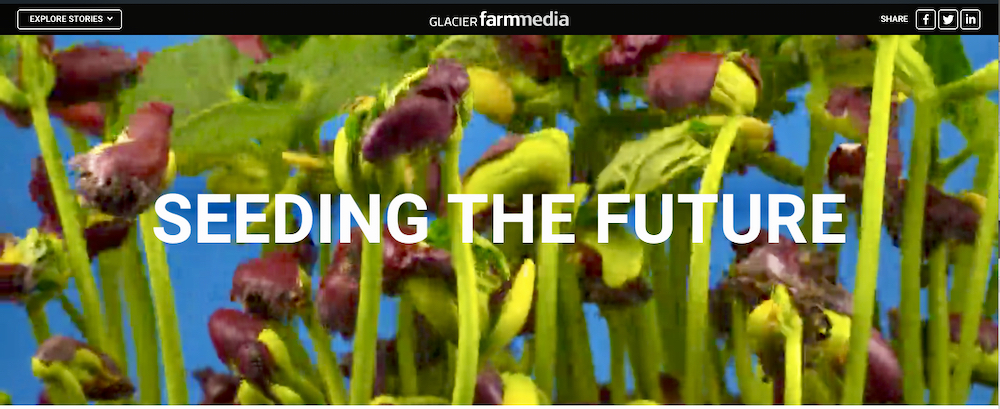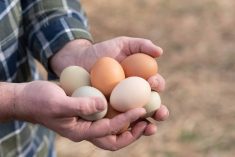I started working as a writer and editor before the internet was a thing, before digital was a thing. In fact, I can remember flipping through newspaper clippings for background information and standing in line at London Drugs to get my film developed for my stories.
Things sure have changed. My generation of writers and editors has evolved alongside the development of digital technology and the evolution of the internet (I don’t know how I did my job before the internet). We have put a whole host of technological tools to work that make our jobs easier.
Read Also

Health hazards are often overlooked risks on the farm
While quite different from the dangers posed by farm machinery, hazards such as loud noise or sun exposure require the same proactive attention, the Canadian Agricultural Safety Association says.
Now, as a society, we are bearing witness to a change in online media consumption. There are now choices. Would you rather listen to a podcast to get your information? Do you prefer to watch a video on a certain topic? Are you drawn toward infographics or animated material? Or do you prefer to consume information on websites using all of these elements combined? This is one of the directions the communications industry is taking — we’re shifting toward the use of more than one medium, or to multimedia, to tell our stories.
Why am I bringing this up? Last January, Glacier FarmMedia’s network of editorial teams, with the help of a multimedia expert, began working on our first digital multimedia story collection for a new GFM website, gfmdigital.com.
For many of us, this meant a crash course in podcasting, graphics and animation creation, scriptwriting and video production. Our first collective topic — Seeding the Future.
After months of work, the website has been released (see the graphic link at the end of my article). Yesterday, I meant to spend only 30 minutes poking around the site while I finished my morning coffee. Have you ever gone down an internet rabbit hole? I surfaced two hours later.
What hooked me and kept me scrolling was the novel ways stories were being told using multimedia. In one story on genetic technology, writers Robert Arnason and Ralph Pearce pose the question “The wheat genome: scientific revolution or a step forward in wheat breeding?” and they use videos, infographics, animation and audio clips to tell the story — it is engaging and masterful, and a true enhanced user experience.
In Karen Briere’s story “Fast track designer genes” you can click a button to hear the sound of sequencing genes through a synthesizer synced up to an algorithm built from more than 1,000 plant genes. That’s pretty cool.
 In one of his contributions to the site, Bruce Thorson, our multimedia expert and producer, sits down for a conversation with Steven Webb, the Global Institute for Food Security’s CEO, to discuss the rapid advances in crop genomics and their unlikely connection to COVID-19. It’s completely animated (click the ‘A, B, C, D-coded’ image at left to visit the page and watch it).
In one of his contributions to the site, Bruce Thorson, our multimedia expert and producer, sits down for a conversation with Steven Webb, the Global Institute for Food Security’s CEO, to discuss the rapid advances in crop genomics and their unlikely connection to COVID-19. It’s completely animated (click the ‘A, B, C, D-coded’ image at left to visit the page and watch it).
In total, there are 22 multimedia stories from 23 writers and editors across our network covering genetic technology, seed, sustainability and biodiversity. For this project, I learned how to use Zencastr, a podcast creation app, and how to process those raw files with an audio editor, proving you can teach an old dog new tricks.
I was lucky enough to interview research scientist and Plant Gene Resources of Canada curator Axel Diederichsen for my podcast “The Curious Cultivator.” I wanted to find out what drives the person who cares for one of our most precious resources (seed). I found out he spent his early life preparing for this role at the PGRC against a backdrop of diverse settings, social and political upheaval and across international borders. You can listen to the podcast or read the story if you prefer.
My discussion with Diederichsen led me to look into Nikolai Ivanovich Vavilov, an early 20th century Russian botanist and geneticist. Even his status as a world leader in plant breeding and plant genetic resource conservation, driven by his passion to feed the peoples of Russia, could not save him from the tragic consequences of a collision between politics and science. The story of this martyr for science and biodiversity can be found on the site.
At the time of writing, the GFM Multimedia Series has just released a collection of stories on Truth and Reconciliation and agriculture. A growing number of Indigenous communities see agriculture as key to their futures, not only as a means of economic development, but as a way to heal from the painful legacies of residential schools and systemic racism. This collection of stories offers a glimpse into their journeys.
The story “Cattle deal dealt with 140 years later” by Alex McCuaig recounts the history of the 1877 Treaty 7 agreement and how it was finally upheld in 2021 — 14 decades after it was signed — and includes some historic photos of the Blood Tribe and Blood Reserve.
“Reconciling the painful past creates hope for a more promising future” by D.C. Fraser tells the story of the File Hills Colony, an experiment that epitomized everything wrong with colonial attitudes toward Indigenous peoples, and the new model emerging for Indigenous agriculture.
These and other stories are compelling and can be found in this collection.
Lastly, one more website to check out in November is farmforumevent.com. The agenda for Farm Forum 2021, to be held virtually Dec. 7-9, has been posted. Favourite ag speakers Kevin Hursch, Curtis Rempel, Angela Bedard-Haughn and Jeff Schoenau are just a few who will be there.
Have a great November,
Kari
Check out the new ‘Seeding the Future‘ website at gfmdigital.com by clicking the image below!

















